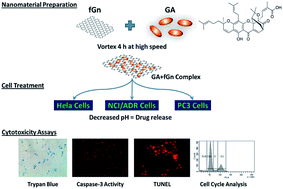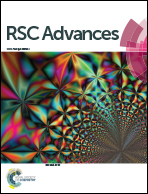Nanodelivery of gambogic acid by functionalized graphene enhances inhibition of cell proliferation and induces G0/G1 cell cycle arrest in cervical, ovarian, and prostate cancer cells
Abstract
Functionalized graphene (fGn) has been used to deliver the low toxicity plant product, gambogic acid (GA), to cervical, ovarian, and prostate cancer cells, and the relative cytotoxicity of this complex when compared to delivery of drug alone has been evaluated. In this study, we analyzed the characteristics of the GA + fGn complex, including pH-sensitive release of the drug from the nanomaterial. We then compared the in vitro effects of GA and GA + fGn on the growth inhibition and apoptosis in the above three cancer cell types. We found that GA, when delivered as a GA/fGn complex was more effective at inhibiting cell proliferation, initiating cell cycle arrest and inducing apoptosis in HeLa, NCI/ADR-RES, and PC-3 cancer cell lines compared to delivery of drug alone. Overall, our results indicate that this novel GA/fGn nanocomplex has the ability to inhibit proliferation and induce apoptosis in several different organ-derived cancer cells, and could have potential as a new drug delivery strategy in cancer chemotherapy.


 Please wait while we load your content...
Please wait while we load your content...